In a handsome Edwardian house in south London, the bold kitchen’s interior is literally made from kitchen rubbish. No slabs of pristine Carrera marble or granite in Mountain View. Instead, the work tops and cupboard doors had former lives as microwave meal trays, bottle tops and plastic chopping boards. It’s the epitome of “waste-not-want-not” design, with recycled plastics given a new – more noble – role, and adding style.
More like this:
– The world’s most ingenious buildings
– The rise of relaxed minimalism
– The origins of the de-cluttered home
Mat Barnes of architecture and design studio CAN, and owner of Mountain View, was drawn to the graphic quality of recycling company Smile Plastics’ bold panels made from kitchen packaging waste. “They’re like exaggerated surreal marble,” he tells BBC Culture. But his choice wasn’t purely driven by environmental concerns. “We chose them for their aesthetic, we weren’t compromising our look by going for something sustainable.”
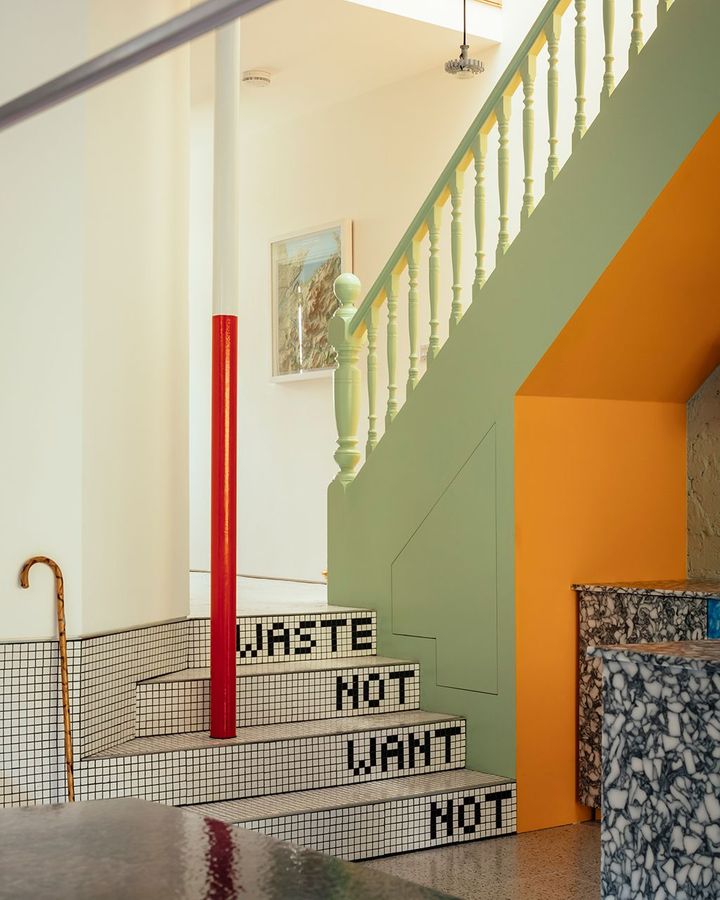
The interior of Mountain View was created from re-purposed building materials by Mat Barnes of design studio CAN (Credit: Jim Stephenson)
Similarly, rather than adorning the living room with brand new decorative mouldings – in reference to the house’s original period details – Barnes scoured a local plaster maker for seconds. These delightfully imperfect fragments were stuck to the walls like sculptures, and painted a rich blue in keeping with the rest of the monochrome room.
Like many designers and architects these days, Barnes was keen that as few building materials as possible ended up as waste from the transformation of this house into a pop-culture-inspired family home. So the offcuts from the kitchen cabinets were used externally on the first floor’s concrete lintels; and when part of an internal brick wall was removed to create a cascading wall effect between the kitchen and living area, those same bricks were relocated to the back of the garden and laid out as a patio.
The recycling and repurposing of materials is increasing in popularity. With recycling, materials are turned into something else for their second life, which generally takes some effort and energy. With repurposing, items are simply used again, though often for new purposes. In both cases, designers have more and more products and techniques to choose from.
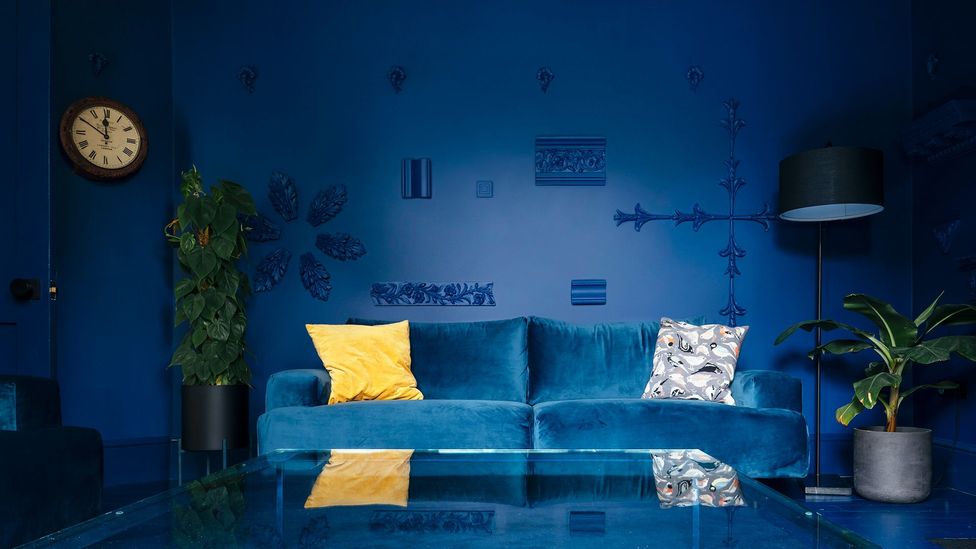
Mountain View is among the homes featured in the new book Reclaimed: New Homes from Old Materials by Penny Craswell (Credit: Jim Stephenson)
When a mid-20th-Century house near Bratislava was in too poor a condition to renovate and extend, architect Martin Skoček demolished it. Nothing remarkable about that. But rather than starting from scratch, he got the bricks cleaned up, and used them for the interior walls of House V, a new gabled property on the same site. These bricks now cover the peripheral walls of the open-plan living area, the master bedroom and its en-suite bathroom, and the children’s rooms.
“Lining the inside of your home with recycled bricks isn’t just an intelligent way to reuse construction waste when pulling down a house and putting up a new one. It also creates a unified and beautiful interior finish,” writes Penny Craswell in her new book, Reclaimed: New Homes from Old Materials. She adds that moving House V’s bricks inside “provides a fresh new aesthetic. Sometimes reusing the same materials in a different space can be enough to make it look like a completely contemporary redesign.” In this way, the interior of the house near the Slovakian capital echoes the exterior of its rural neighbours.
Going for the waste-not-want-not approach carries a cachet in some parts of the world, where being sustainable is worn as a badge of honour. But Malay Doshi of architects Studio Sārānsh in Ahmedabad, India, is something of an outlier. For the transformation of a two-bed dwelling into his own open-plan studio apartment, “he departed from the new finishes usually used in new residential projects in India, instead opting for reclaimed and handcrafted materials,” writes Craswell.
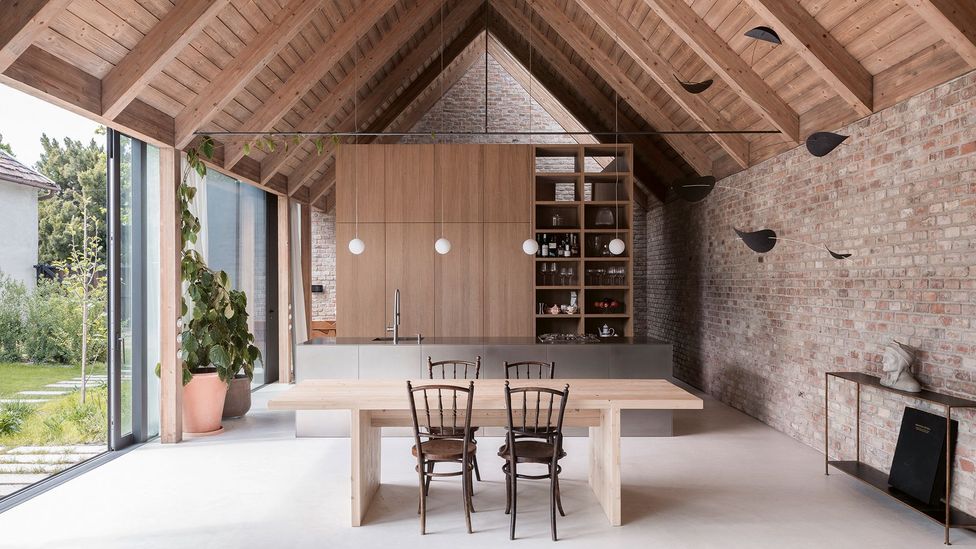
Recycled bricks are used to line the walls of House V in Bratislava, designed by architect Martin Skoček (Credit: Matej Hakar)
So instead of the typical chic and shiny-bright aesthetic, his MD Apartment has a raw, unfinished look created using reclaimed materials. Here, raw concrete, hand-finished plaster, stone and concrete tiles rub shoulders with dark, aged teak. Doshi didn’t create this look by flicking through new product brochures. Instead, he came across a shop in an industrial area of Ahmedabad that was full of reclaimed building materials. There, he picked up aged teak that had come out of housing that dated back to the Mughal Empire, which ended in the mid-1800s.
A second life
While the apartment was being stripped of all its partition walls, and reconstructed to Doshi’s design, he spent a lot of time on site. He was there to see the teak flooring and wall cladding being installed, which meant he was able to squirrel away precious offcuts of wood. He used some to line the shoe shelves near the front door, and artfully inlaid others in the concrete of the kitchen floor. The kitchen also has aged teak drawers below its grey stone work surface, and the library’s shelves are fashioned from reclaimed timber. He even turned a load of long, slim offcuts into a latticed grid top for the coffee table in the living space.
In total, around 70% of the wood in MD Apartment is reclaimed. And although some of it in its former (long) life had been carved into, or glued together or had long nails extracted, it was still stronger than new wood, and “it had a distinctive look derived from its age,” Doshi explains in the book.
Craswell echoes this, writing of the aesthetic benefits of wood. “Reclaimed timber can be extremely beautiful, thanks to a patina that accumulates with time and wear.” As well as creating a warm, one-off look, there are the obvious environmental benefits to this approach. RIBA’s Built for the Environment report shows that 40% of global greenhouse gas emissions are attributable to buildings and construction, consuming about 50% of all raw materials worldwide in the process. That includes concrete, bricks, wood, glass, metals and plastic. In the UK alone, more than 50,000 buildings are demolished each year, many of which could have been repurposed, according to RIBA.
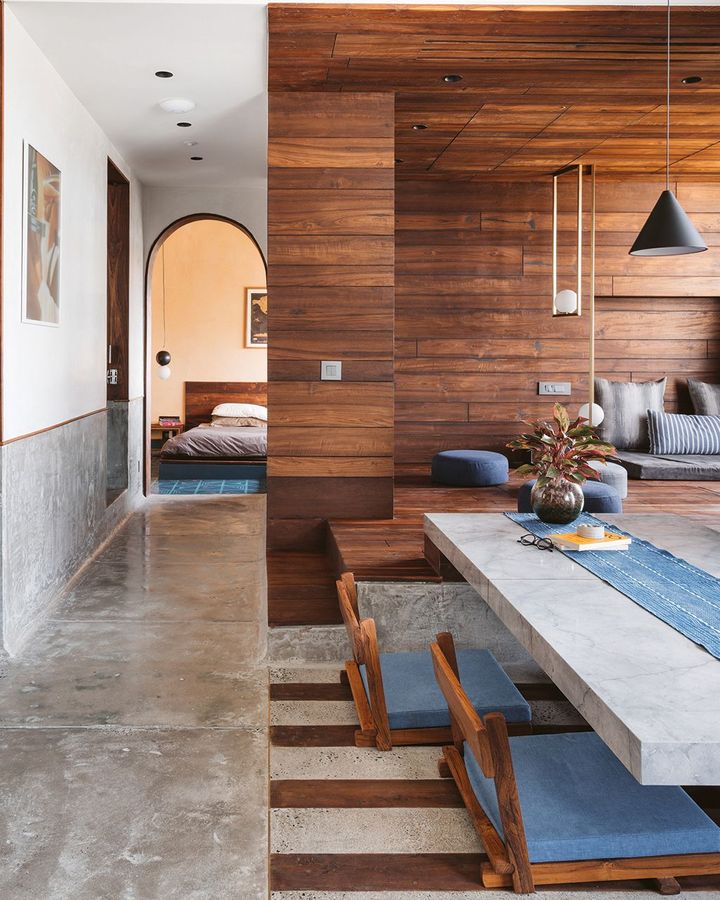
MD Apartment in Ahmedabad, designed by Studio Sārānsh, shows how recycled timber can help create a chic space (Credit: Ishita Sitwala/ The Fishy Project)
“Using reclaimed and recycled materials is a vital part of the circular economy that we need to establish if we are going to fight the climate crisis,” writes Craswell. Historically, the circular economy has been much talked about in the worlds of fashion and products, but increasingly interior designers and architects are getting in on the act. And their decisions can help eliminate waste by reusing buildings and their material components.
In Reclaimed, Craswell makes the point that “Architects and interior designers can tackle pollution through the choices they make. Architects have a responsibility… to divert useable materials from landfill. Interior designers can do even more,” as interiors often have a shorter lifespan than the building itself. She cites author Katie Treggiden, who researches the use of recycled waste in design. “She believes that building materials and interior finishes made from waste or ‘second-life materials’ are becoming more accepted – or sought after,” Craswell adds.
Pete Collard, curator of RIBA’s exhibition Long Life, Low Energy: Designing for a Circular Economy, backs this up. “When you’re reusing materials directly, there’s an obvious second-hand quality. It’s good to wear your language on your sleeve, presenting your history up front.” Collard believes that “using waste products found on site, which have an aesthetic of their own, means rethinking visual languages, away from pristine.”
Of course, repurposing materials from old buildings is nothing new. In Roman cities, pieces of stone were dragged from one part of town to another to form new buildings. And then in the Middle Ages, parts of timber structures found new homes. So the principles of the circular economy have deep roots. But things changed in the UK in the mid-Victorian era, when mass-produced house-building took off. And with the industrial revolution, the production of materials and furniture was scaled up, and people with money wanted to show off their wealth. “Buying brand new was the way to do that,” says Collard.
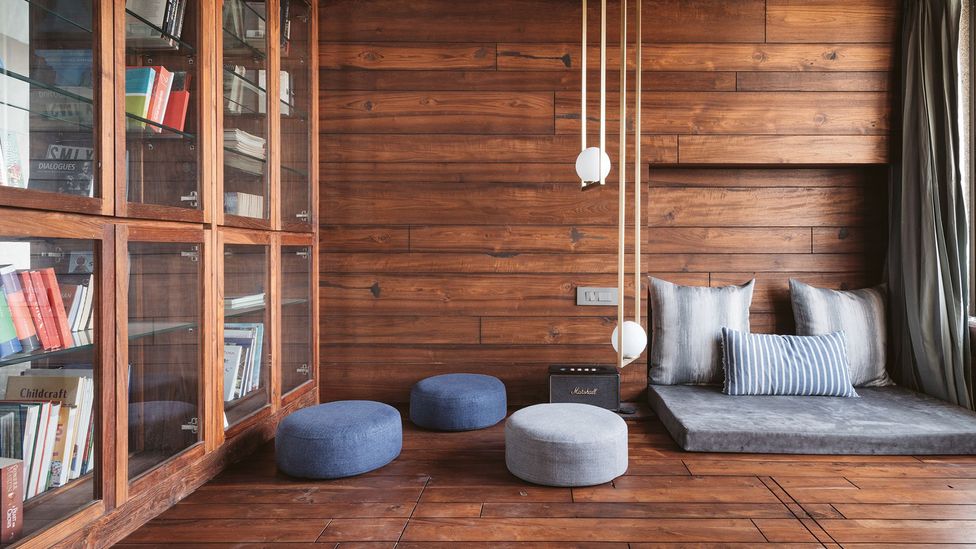
The warm tones and textures of MD Apartment are achieved through the use of re-purposed teak floorboards (Credit: Ishita Sitwala/ The Fishy Project)
Little has changed in many parts of the world, until now. New techniques allow the “the breakdown and reconstitution of waste [which] is the new frontier when it comes to recycled building materials,” Craswell writes. “Recycling processes can also allow non-construction waste materials, such as post-consumer waste, to be transformed into construction materials.” Hence insulation made from old denim, benchtops made from old plastic chopping boards and terrazzo made from recycled glass. And with the increasing scarcity in materials, repurposing and recycling will soon be a necessity rather than a choice.
While aesthetics in previous times often trumpeted the big, bold and novel, repurposing and recycling has a different approach. Rather than creating interiors that show off wealth, “now we need to show off about sustainability”, Collard believes. “There’s a financial value to this approach, but there’s also a cultural value.” And he predicts that “increasingly, you’ll see eco credentials presented upfront”.
With the direction of travel for interior designers and architects clear, one question remains: what will net-zero, circular-economy design look like?